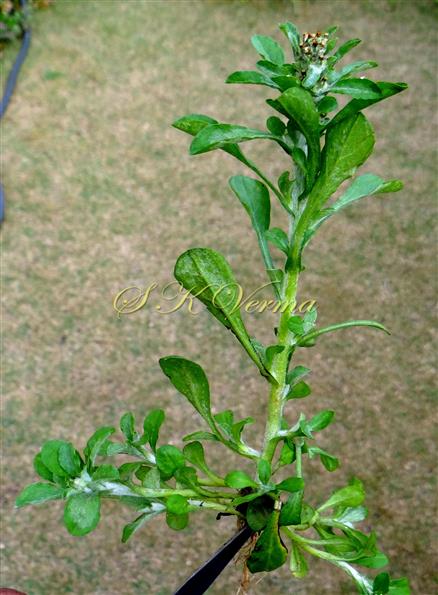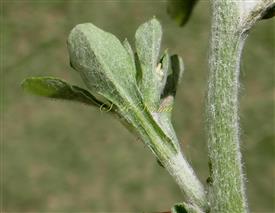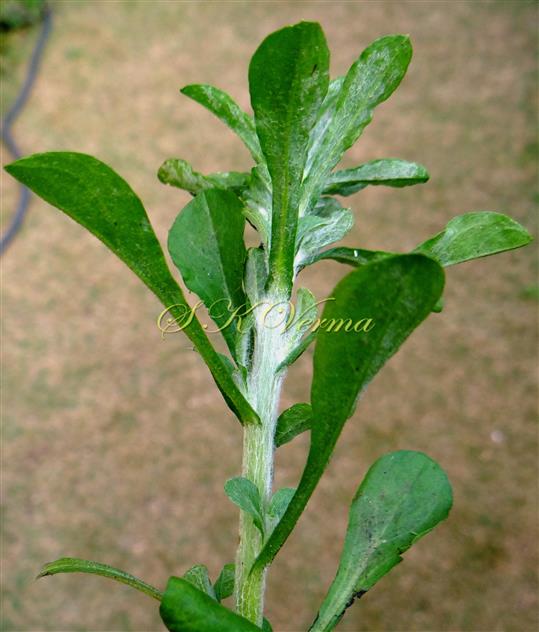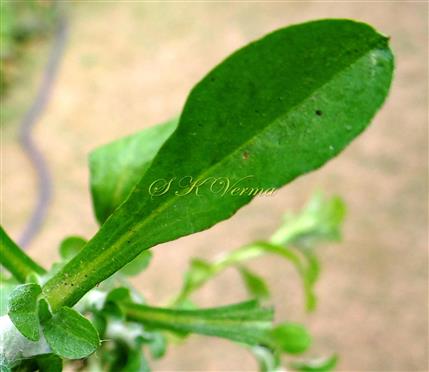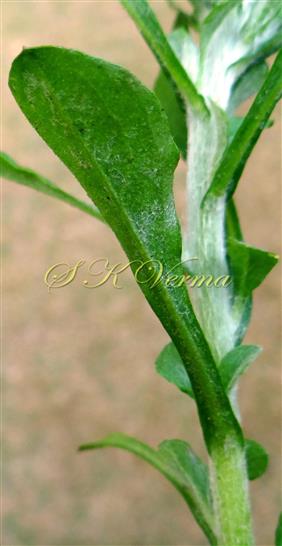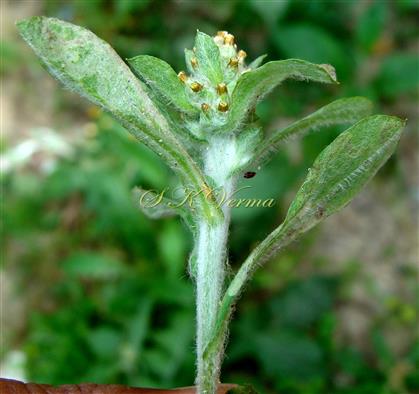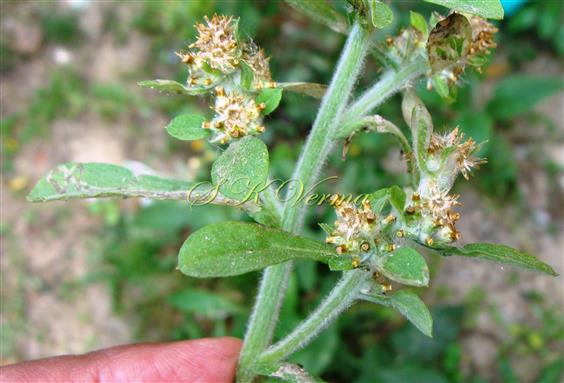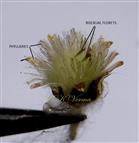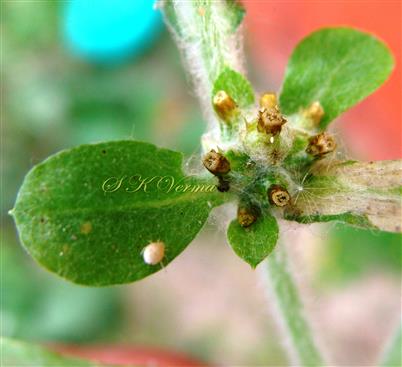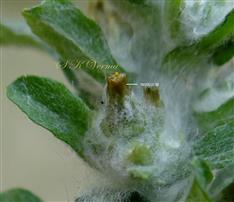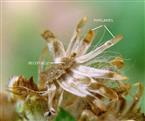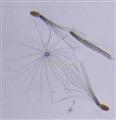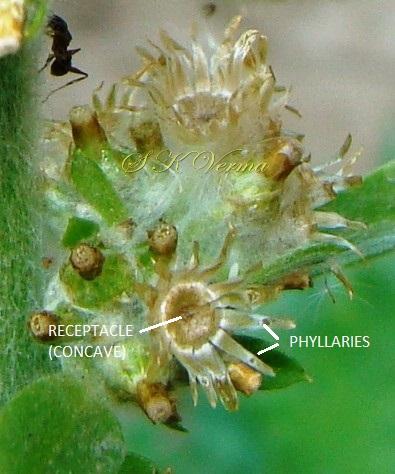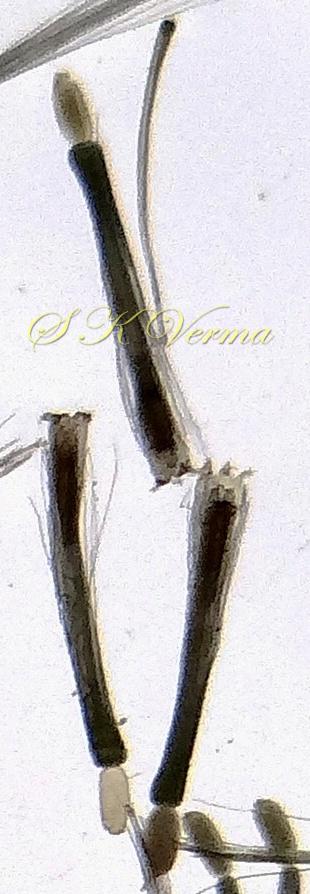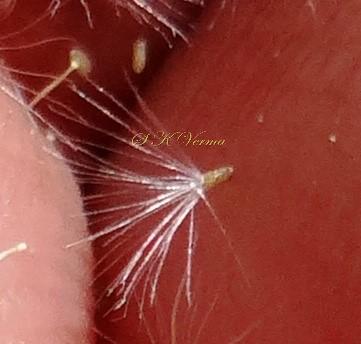GAMOCHAETA
Gamochaeta
Wedd., Chlor. Andina. 1: 151. 1856; Chen & Bayer, Fl. China @ eFloras.org 20-21: 776; Fl. North Amer. @ eFloras.org 19-21: 431; Fl. Pak. @ eFloras.org p. Pakistan V. 210
.
Annuals, biennials or perennials, stem usually erect. Leaves basal and cauline, alternate, sessile; leaf blades mostly linear to oblanceolate or spatulate, tomentose on both surfaces, margin entire, base cuneate to +/- cordate. Capitula small, disciform, usually in glomerules borne in continuous or interrupted, usually spiciform, sometimes paniculiform arrays. Involucres narrowly to broadly campanulate, 2.5-5 mm. Phyllaries in 3-7 series, unequal, mostly brownish to stramineous, distally chartaceous to scarious, eglandular. Receptacle flat (concave in fruit), glabrous, epaleate. Outer florets female, fertile, more numerous than central bisexual florets, 50-130, filiform. Corolla all yellow or purple tipped. Central florets bisexual, 2-7, corolla narrowly tubular to campanulate, 5-lobed, yellow, purple-tipped or purple. Anthers with flat appendages. Style branches truncate, with hairs apically. Cypselae +/- oblong, slightly flattened, faces with papilliform hairs. Pappi 12-28 barbellutate bristles/ hairs in 1 series, basally connate in smooth ring, falling as unit.
62 species
Gamochaeta americana
Gamochaeta americana
(Mill.) Wedd, Chlor. Andina 1: 151. 1856; Gamochaeta coarctata (Willdenow) Kerguelen, Lejeunia. 120: 104. 1987; Fl. China@ eFloras.org 20-21: 777; Fl. North Amer. @ eFloras.org 19: 435;
Winter annual, erect or decumbent, 9-60 cm long, simple or branched from base, white- pannose (tomentum usually sheath like). Leaves basal and cauline, basal in rosettes, sessile, leaf blades 2-9.5 cm x 0.4-2.2 cm in basal rosette and cauline becoming progressively smaller distally, spatulate to oblanceolate- obovate, apex obtuse or subacute, apiculate, margin entire; faces bicolor: abaxial surface closely white- pannose, adaxial glabrous or glabrate. Capitula disciform, 2.5-2 mm long, campanulate or somewhat urceolate, numerous in short axillary clusters (glomerules) initially forming a continuous spicate inflorescence, later branched and interrupted. Involucre cylindro- campanulate, 2.5-3 mm. Phyllaries 3-4 seriate, unequal; outer ovate-elliptic, araneose at base; innermost equalling florets, oblong or oblong-lanceolate, araneose at base, tip reddish brown; in fruiting phyllaries brownish to stramineous, distally chartaceous to scarious. Receptacle flat (concave in fruit), glabrous, epaleate. Florets 2-2.5 mm long, whitish tipped with reddish purple. Outer female florets, 50-70+, corolla filiform, 3-4-toothed. Central bisexual florets, 2-3(-4). Corolla tubular, dilated upwards, 5-toothed, all corollas usually purplish distally. Cypselae 0.4-0.6 mm long, oblong, minutely glandular. Pappus hairs +/- 2.5 mm long in 1 series, basally connate in smooth ring, scabrid, whitish, deciduous falling as unit.
Common Names: Elegant Cudweed
